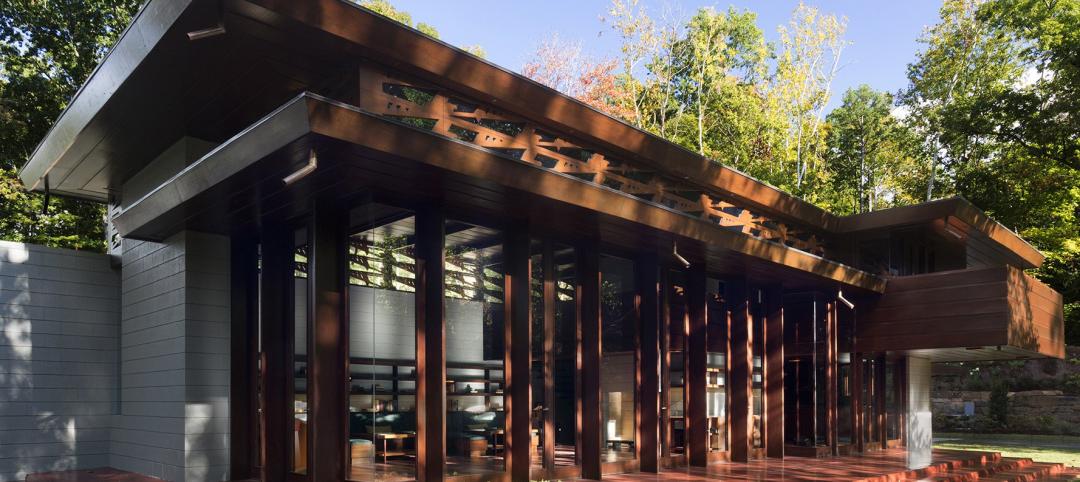A Soviet-era parking garage in Lithuania that sits just a few dozen feet from the Neris River and has been described as an “eyesore,” has been transformed into a bright display of color and lights as part of the Vilnius Street Art Festival. Ignas Lukauskas, an architect whose PhD thesis was on urban landscapes and how art and architecture can create disruptions, created the new look for the building.
The Vilnius Waterfall, as the project has been dubbed, is based on this thesis. The photorealistic waterfall image was pasted onto more than 2,000 sm (making it the largest project like this ever executed in Lithuania) of the structure’s exterior surface and uses the building’s terraced look and its location near the Neris to further enhance the faux waterfall’s illusion.
The water appears to crash and cascade down the various terraces of the structure, which is currently used as a garage for storing and maintaining Parliament vehicles, on its way to the river. The stagnant appearance offered by the building’s former look is replaced with one that is dynamic and flowing.
The new façade is only temporary, but the goal is for it to bring a refreshing hint of the natural landscape to Lithuania’s capital city.
View more images of The Vilnius Waterfall here.
Related Stories
Healthcare Facilities | Nov 4, 2015
Hospital designers get the scoop on the role of innovation in healthcare
“Innovation” was the byword as 175 healthcare designers gathered in Chicago for the American College of Healthcare Architects/AIA Academy of Architecture for Health Summer Leadership Summit.
Office Buildings | Nov 3, 2015
Emotional intelligence and design
In a world in which technology and its skills are constantly changing, good people skills are becoming more important, writes VOA's Angie Lee.
Architects | Nov 2, 2015
NCARB: Interactive tool helps architects prep for exam
The Transition Calculator for the Architect Registration Examination (ARE) will help licensure candidates transition from ARE 4.0 to ARE 5.0.
Architects | Nov 2, 2015
China Accord: Design firms sign pledge to tackle climate change
52 companies will collaborate to reduce carbon emissions.
BIM and Information Technology | Oct 29, 2015
MIT develops ‘river of 3D pixels’ to assemble objects
The Kinetic Blocks can manipulate objects into shapes without human interference.
Architects | Oct 27, 2015
Top 10 tile trends for 2016
Supersized tile and 3D walls are among the trending tile design themes seen at Cersaie, an exhibition of ceramic tile and bathroom furnishings held in Bologna, Italy in October.
Architects | Oct 27, 2015
Architecture at Zero 2015 design competition names award winners
Entrants created family-style student residential plans for the University of California, San Francisco Mission Bay campus. All projects needed to be as close to net-zero as possible.
Architects | Oct 22, 2015
AIA: Architecture firms reporting progress on achieving carbon reduction targets as part of the 2030 Commitment
The AIA 2030 2014 Progress Report highlights an increase in design projects, gross square footage, and net-zero energy projects.
Architects | Oct 21, 2015
Strong rebound for Architecture Billings Index
Business conditions continue to be weak in the Northeast, but the other regions are in good shape.
Museums | Oct 20, 2015
Frank Lloyd Wright’s Bachman Wilson House finds new home at Arkansas museum
Crystal Bridges Museum reconstructed the 61-year-old Usonian house and will open it to the public in November.

















